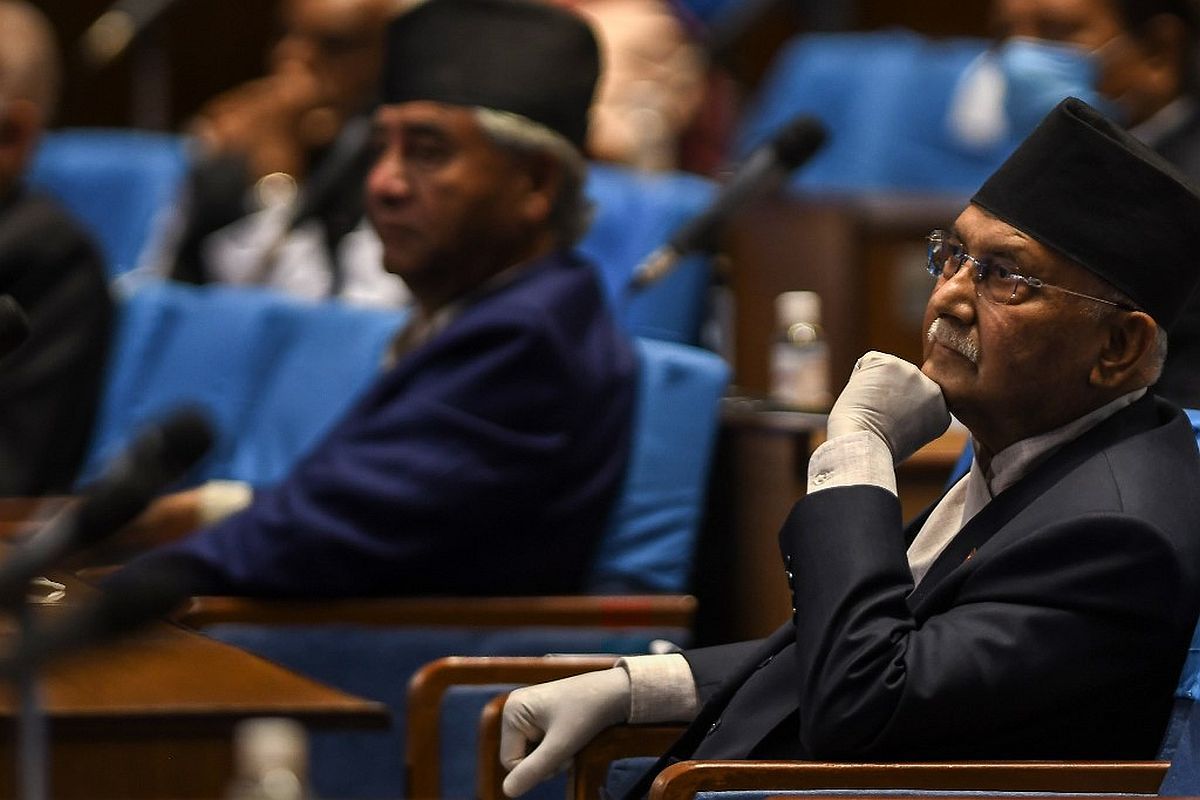The expulsion of Nepal’s Prime Minister, Mr KP Sharma Oli, from general membership of the Nepal Communist Party (NCP) has doubtless jolted the government to its foundations, indeed isolating the head of government from the ruling political architecture.
In point of fact, the Himalayan country is helmed by a Prime Minister who at this juncture cannot claim allegiance, still less affiliation, to any party. Saturday’s somewhat drastic action was announced by two rivals within the splinter faction of the Communist bloc, pre-eminently Pushpa Kamal Dahal aka Prachanda and Madhav Kumar Nepal, former Prime Ministers both. Short of calling the expulsion a disciplinary move, the NCP leadership has been emphatic on the point that Oli had failed to furnish an explanation for his recent moves, as sought by the ruling entity.
Chief among these was what they call the “unconstitutional” dissolution of Parliament, the embodiment of the people’s will, albeit theoretically. This, his detractors claim, had stoked serious threats to the country’s “hard-earned federal democratic system”. The dissolution of Parliament has dealt a critical blow to the Constitution as well as the democratic republic system that Nepal boasts… theoretically once more.
This system was put in place after a prolonged struggle against what was once an omnipotent monarchy. It bears recall that the paradigm shift followed the mayhem in the palace in 2001. After the boat was rocked with the dissolution of the House, the crisis has deepened with Oli’s expulsion. Specifically, he has been stripped of his political identity by Prachanda and Madhav Nepal.
The latter has now underlined a Constitutional certitude, quite plainly that the Prime Minister does not have the right to dissolve Parliament. Oli’s action was as unilateral as it was arbitrary. That action , it will be recalled, was the culmination of the struggle for the post-royalist mastery of Nepal between Oli and Prachanda.
As recently as 20 December, Oli who is known for his pro-China leanings, had in a surprise move dissolved Parliament amidst the tussle for power. It was intrinsically an inter-personal conflict of interests. Oli, who is the chairman of a faction of the NCP, had said he was compelled to dissolve the House when he came to know that the Prachanda faction was conspiring to bring a no-confidence against him coupled with an impeachment motion against the country’s President, Bidya Devi Bhandari.
The CPN-UML, led by Oli, and the Prachanda-led NCP (Maoist centre) had merged in May 2018 following the victory of the alliance in the 2017 general election. As it turns out, the Nepal Communist Party now bears witness to what they call a “vertical split”.
The crisis is embedded in a clash of personalities, one that has little or nothing to do with Communist ideology. Having jettisoned the monarchy, it has been a shambolic exercise towards democracy. The people, most importantly the voters, are the worst sufferers of the tussle within the Communist hierarchy.












